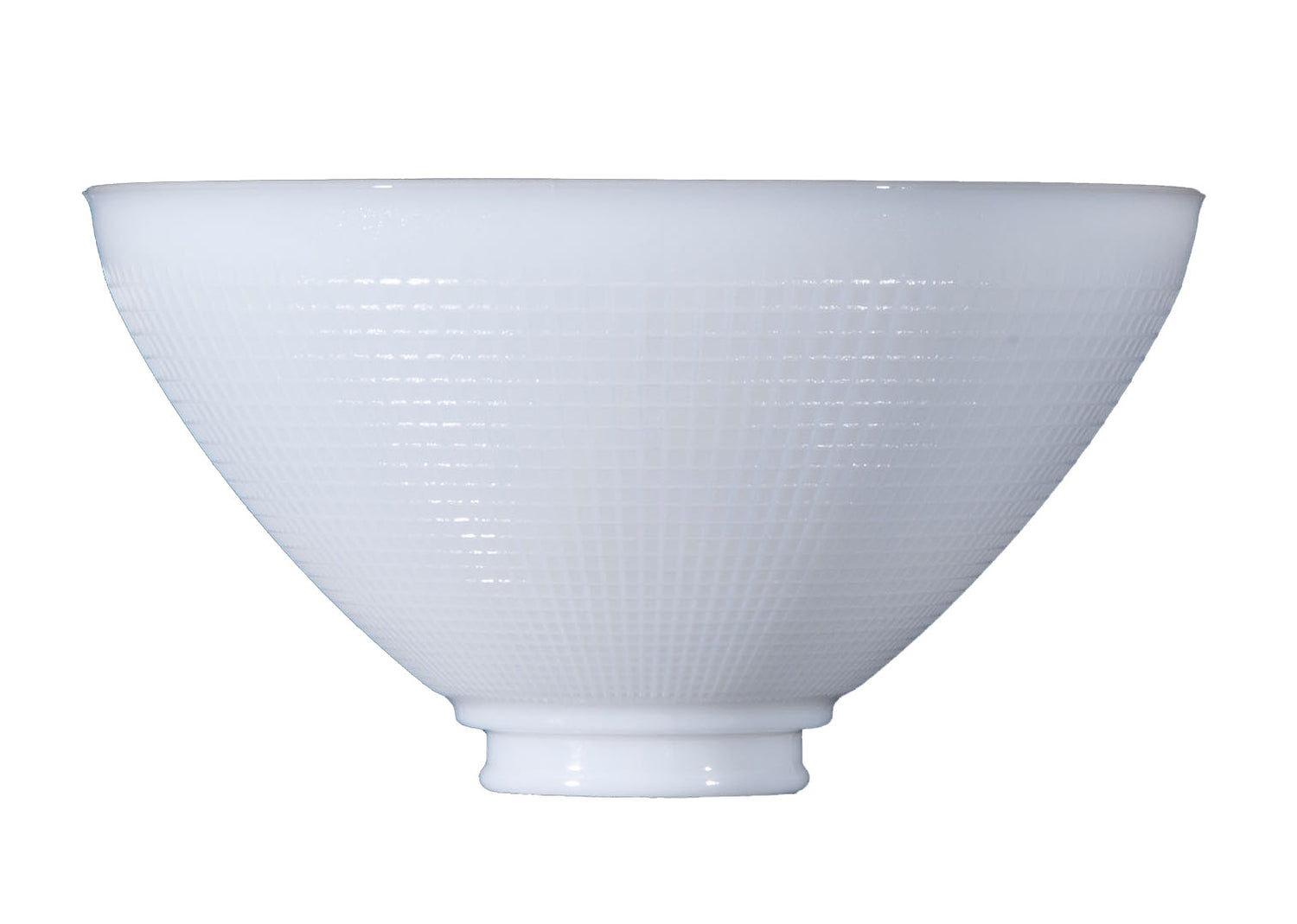Lamp Glossary
Accent: Lighting that is used to accentuate or emphasize an object or objects, such as artwork, figurines, or photos.
Alabaster: A fine-grained form of white or translucent crystalline gypsum that is used to make fixtures or figurines.
Ambient: A general mixture of artificial and natural lighting used to provide visibility in an entire room or space.
Ampere (Amp): A standard unit of electrical current equal to a flow of one coulomb of passing charge per second.
Annealing: The process of slowly cooling a completed glass or crystalline object after it has been in the furnace.
Arc: A lamp that produces light from an electric (voltaic) arc established between two electrodes to stimulate gas.
Argand: A burner that features a circular wick held between two concentric metal tubes, a chimney, and improved airflow to produce a brighter flame. Also – a lamp with a centrally located oil fount that feeds an arm-mounted burner.
Astral: A metal lamp that employs an Argand burner and intake holes located at the base of the oil fount.
Ballast: An electrical device used to regulate the current in the electrical circuit of fluorescent or HID lamps. A ballast supplies sufficient voltage to start and operate a lamp but then rapid reduce the current to produce enough electricity to serve as a stable light source.
Ballast Factor (BF): The measurement of a fluorescent lamp operated on a ballast compared to the fluctuation when operated on the standard ballast specified for rating lamp lumens. A high ballast factor means more wattage is being used by the light fixture.
Base: The part of a lamp that provides a means of physically and electrically connecting the lamp to a socket or lamp holder within a luminaire. A lamp and a fixture are only compatible if the lamp base matches the fixture socket.
Bulb: A transparent casing that is generally made of glass and contains a light source.
Burner: The lamp mechanism that produces the flame and generally consists of a metal enclosure, a wick, and air perforations to provide air flow for efficient combustion.
Canopy: The part of a lighting fixture that covers the outlet box and mounts to the ceiling.
Chandelier: A hanging light that is decoratively designed to be the focal point of a dining room or vestibule.
Chimney: An enclosure that regulates the flow of air to and around a lamp burner.
Circuit: The pathway in which electrons from a capacitor, resistor, transistor, or another current source flow.
Compact Fluorescent Lamp (CFL): A fluorescent lamp that features a built-in ballast, screw base, and a bent tube to reduce space requirements and replace incandescent or halogen bulbs.
Current: The flow of electric charge in a conductor, which allows electric currents to flow freely.
Diffuse: To spread or scatter light coming from a lamp or light fixture so that it may appear soft with minimal glare.
Dim: To modulate the lighting output and power of a lamp or light fixture.
Discharge: When electric current flows through a gaseous medium due to ionization of gas and radiates visible light.
Electrode: An electrical conductor through which electricity enters, leaves, or makes contact with a nonmetallic part of an electrical circuit or light bulb.
Electron: A stable subatomic particle with a negative electric charge.
Filament: A conducting wire coil that is typically made of tungsten and becomes incandescent by an electric current.
Fluorescent: A low-pressure mercury electric-discharge lamp that uses a phosphor coating on the inside of the glass tubing to transform ultraviolet energy into visible light.
Frequency: The quantity of occurrences of a repeating event per unit of time. The standard unit for frequency is Hertz, or one cycle per second.
Halogen: An incandescent lamp that contains halogen gases to slow evaporation of the tungsten filament.
Incandescent: A type of lamp that glows due to the passage of electric current through a heated tungsten filament.
Induction: A type of fluorescent lamp that employs electricity to generate an electromagnetic field that causes the gaseous mercury atoms inside the glass envelope to emit ultraviolet radiation and convert it into visible light by the phosphor coating on the inside of the glass envelope.
Kelvin (K): A base unit of measurement for thermodynamic temperature, equal in magnitude to the degree Celsius.
Kilowatt (kW): A unit of measurement for electric power, equivalent to 1,000 watts.
Lamp: A source or fixture that emits light, comes with either a built-in or external ballast, and includes a base.
Light-Emitting Diode (LED): A solid-state semiconducting light source that releases energy in the form of photons and emits blue, green, red, or white light when exposed to electric current.
Lumen: A base unit of measurement for the lighting output of lamps and fixtures per second.
Mercury (Hg): A chemical element that is added to the inside of fluorescent and compact fluorescent light bulbs, because it excites electrons and creates flashes of ultraviolet light.
Pendant: A lighting fixture that hangs from the ceiling and uses a shade or globe to prevent glare.
Reflection: The bouncing of light upon contact with a different medium or boundary.
Refraction: The bending of light as it passes through a different transparent or translucent medium.
Sconce: A light fixture that is fastened to the wall and generally decorative in design.
Shade: An opaque or a translucent screen that prevents a light source from being viewed directly.
Socket: The electrical device of a light fixture that receives a plug or light bulb to provide a connection.
Torchiere: A type of floor lamp that emits indirect lighting due to an inverted lampshade that directs light upward.
Valance: A light fixture that is used above the upper edge of windows to direct light downward and upward.
Voltage: The potential difference in electrical charge between two points in a circuit, expressed in volts.
Watt: A base unit of power, equivalent to one joule per second.
Wattage: A base unit of measurement for electrical power consumed by a lamp or light fixture, measured in watts.
If you have any questions about our lamp glossary, please contact Antique Lamp Supply today to learn more.

